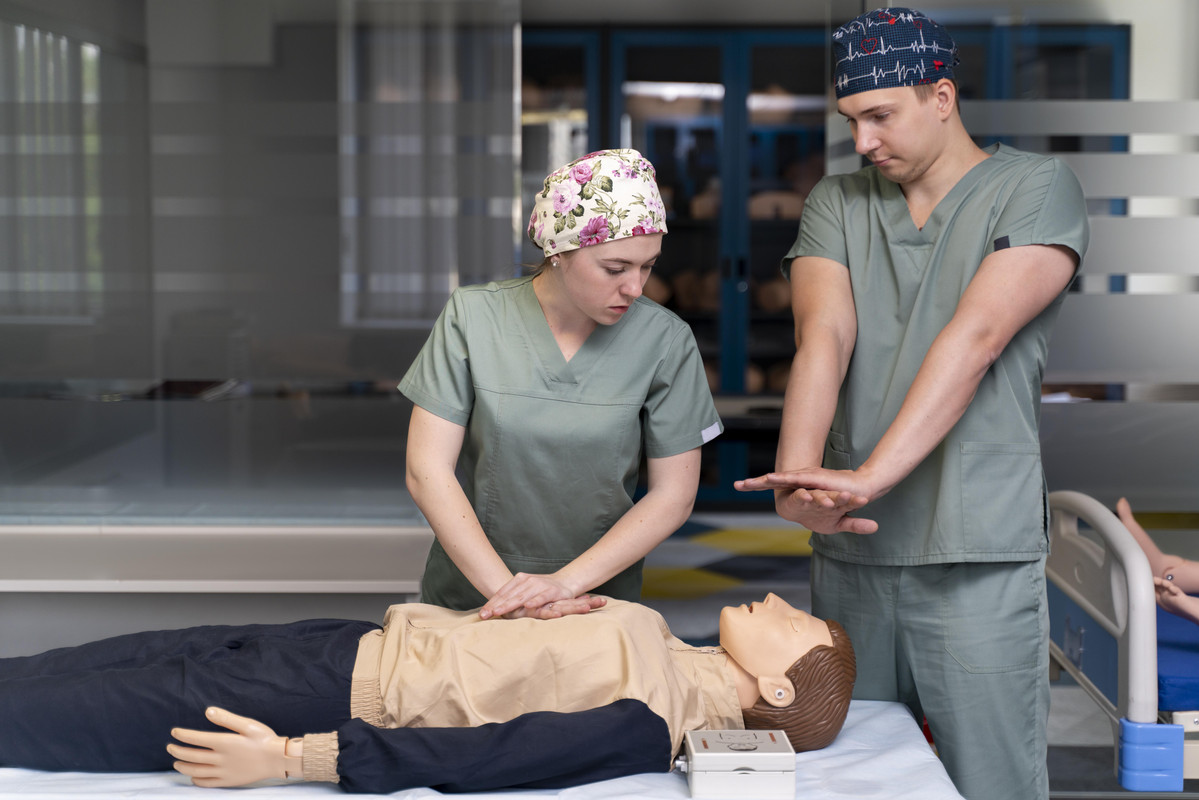Introduction
Cardiopulmonary resuscitation (CPR) is a lifesaving technique that can make a significant difference in an emergency situation. Whether you're a healthcare professional, a caregiver, or simply someone who wants to be prepared for emergencies, a CPR course can equip you with the necessary skills and knowledge. This guide provides comprehensive CPR course information, covering everything from the types of courses available, the training process, to the benefits of receiving CPR certification.
Understanding CPR
CPR, short for Cardiopulmonary Resuscitation, is a lifesaving procedure performed when the heart stops beating. It involves chest compressions and breaths that help circulate oxygen-rich blood to the brain and other vital organs, buying time until professional medical help arrives. CPR can be performed by anyone trained in the technique, not just medical professionals. The American Heart Association (AHA) and the Red Cross offer guidelines for performing CPR, making it an essential skill to learn.

The Importance of CPR Training
Every second counts in a cardiac emergency, and having CPR training can make all the difference. According to the AHA, immediate CPR can double or even triple the chances of survival after cardiac arrest. Furthermore, about 70% of out-of-hospital cardiac arrests occur in homes, emphasizing the need for CPR training for everyone, not just healthcare professionals.
Types of CPR Courses
CPR courses can generally be classified into two types: online and hands-on. Online CPR courses offer flexibility and convenience, allowing you to learn at your own pace. They typically cover the theoretical aspects of CPR, including guidelines and techniques.
When it comes to learning life-saving skills, there's no better place to start than with Cardiopulmonary Resuscitation (CPR) courses. The beauty of CPR training is that it comes in various types, each designed to suit different individuals and their unique needs.
First off, we have the Basic Life Support (BLS) course. This type is perfect for healthcare professionals who need to know how to perform CPR and other life-saving techniques in a wide variety of in-facility and prehospital settings.
Next is the Heartsaver CPR AED course, which is designed for anyone with little or no medical training who needs to learn how to respond to a sudden cardiac arrest (SCA). This course teaches adult CPR and automated external defibrillator (AED) use, as well as how to respond to choking emergencies.
Then there's the Advanced Cardiovascular Life Support (ACLS) course. This is an advanced course that goes beyond the basics, teaching medical professionals how to manage cardiac arrest and other cardiovascular emergencies.
Hands-on CPR courses, on the other hand, offer practical training. Conducted by certified instructors, these courses allow you to practice CPR techniques using manikins, ensuring you're comfortable and confident in performing CPR in real-life situations.
What To Expect in a CPR Course

A typical CPR course covers various aspects of CPR, including recognizing cardiac arrest, performing high-quality chest compressions, delivering rescue breaths, and using an automated external defibrillator (AED). Some courses also cover basic life support (BLS) and emergency first response (EFR) skills.
In addition to theory, a hands-on CPR course includes practical sessions where you can practice the skills you've learned. Most courses end with an assessment, after which you'll receive a CPR certification valid for two years.
Benefits of CPR Certification
Being CPR certified has numerous benefits. Apart from the obvious advantage of being equipped to save lives, CPR certification can enhance your resume, especially if you're in the healthcare or caregiving industry. It's also often a requirement for certain job roles, including lifeguards, teachers, and fitness instructors.
Finding the Right CPR Course for You
Choosing the right CPR course depends on your specific needs and circumstances. If you're a healthcare professional or someone who needs certification for work, a hands-on course is likely the best option. However, if you're looking for basic knowledge or are short on time, an online CPR course might be more suitable.
In conclusion, being trained in CPR can make a significant difference in an emergency situation. Whether you opt for online or hands-on training, the important thing is to be prepared. After all, you never know when you might need to use these lifesaving skills.

0 comments :
Post a Comment